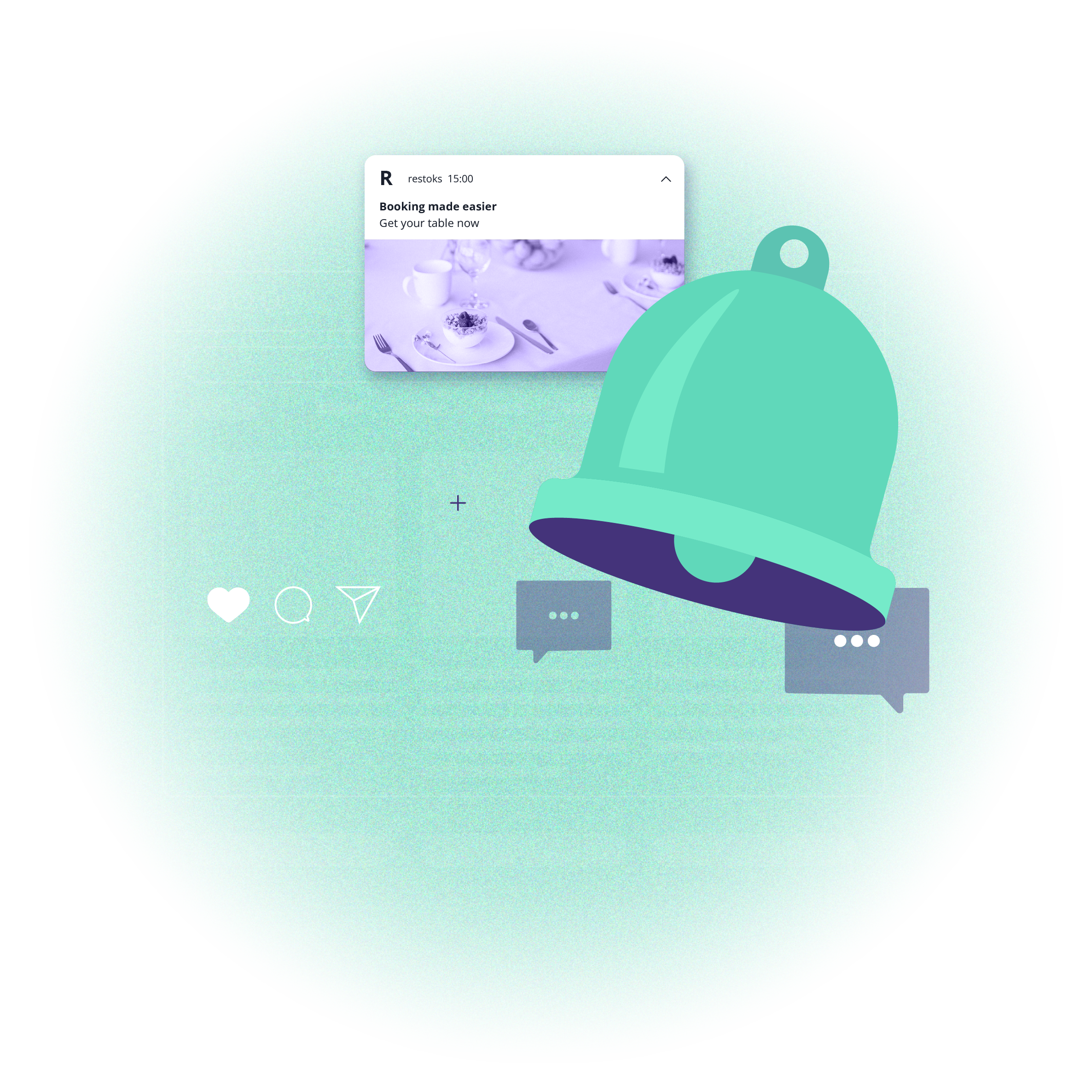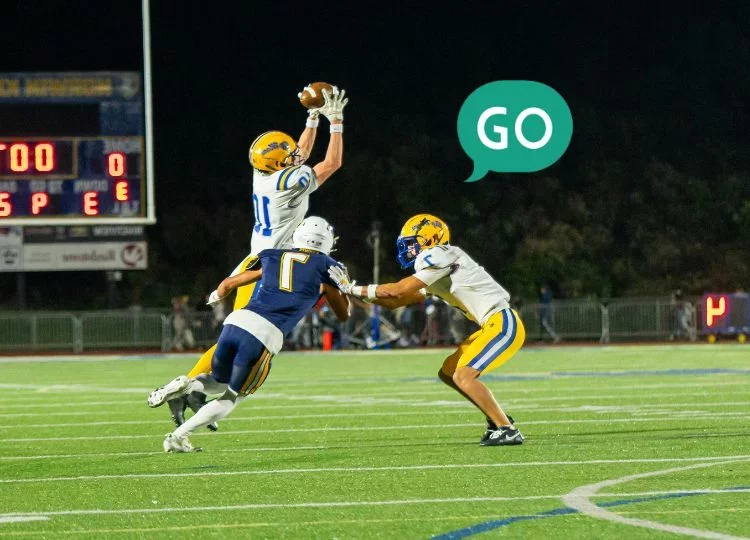Glossary for the marketer
 Aleksandra Kozioł
Aleksandra Kozioł
Every industry has a specific language, and marketing is no exception. Marketers use many different acronyms and terms that are not necessarily understandable for “outsiders”. After all, terms and abbreviations like buyer persona, AOV, push notification, and CTA are not commonly used in everyday communication, are they? That’s why we decided to create a glossary for everyone interested in digital marketing. Below, you will find all the relevant marketing terms and acronyms you should know.
To make this list even more legible, we decided to divide it by different forms and areas of online marketing. Hopefully, this way, everything will be even clearer. Let’s start with the first category.
Marketing analytics
Big data
Large, complex datasets that are difficult to analyze using manual methods. Big data is used to design and optimize marketing strategies and related processes.
Marketing attribution
It informs how each used marketing channel helps conversion (getting more customers). Marketing attribution is used to assess the efficiency of marketing techniques.
NPS
Net Promoter Score. It’s an online survey showing the level of loyalty and satisfaction of your customers. It’s based on just one question: “How likely are you to recommend our company to your friends or colleagues?”
(Buyer) Persona
It’s a fictional representation of the company’s typical or ideal customer. Persona comprises the needs, expectations, and characteristics of a typical customer.
Segmentation
It enables assigning your potential and current customers to specific groups (segments) in order to tailor marketing activities to their specific needs.
Bounce Rate
It’s the percentage of visitors that leave your website without taking any action.
CPM
It’s the cost per thousand impressions (Cost Per Mille); the total amount you have to pay for 1,000 impressions of your website/ad.
CPA
Cost Per Action; it’s an online advertising model based on users taking a specified action, e.g., signing up for the newsletter. You pay for each customer that executes the expected action.
CPC
Cost Per Click; it’s an online advertising model in which you pay for every click of your ad.
CPV
Cost Per View;it’s an online advertising model in which you pay for every view of your video, e.g., on YouTube.
CR (Conversion Rate)
It’s a measurement taking the number of conversions (sales) and dividing it by the number of total views/impressions/clicks.
SEM
Search Engine Marketing; it’s a form of Internet marketing that uses paid advertising in the search engine (e.g., Google Ads).
SEO
Search Engine Optimization; it’s the process of adjusting your website to the requirements of a search engine to boost your website’s visibility.
Unique visitor
It’s a person who has visited the website and is counted only once in a specific period (usually a month).
Push notification marketing
Web push
push notifications to which the user subscribes in a web browser on desktop, mobile or tablet.
Mobile push
push notifications to which the user signs up in the mobile app on the phone. On Android, the signup is by default (unless the application owner sets up a sign-up form). On iOS devices, the sign-up form is displayed in the application.
On-site notification
Notifications are sent in real-time to users the moment they are on the site. No sign-up is required. On-site notifications reach every user who has entered the site.
In-app notification
Notifications are sent in real-time to users while they are in the mobile app. No sign-up is required. In-app notifications reach every user who has entered the mobile application.
PWA (Progressive Web App)
It is a web application developed using specific technologies to take advantage of native app and website features. It is a website that looks and behaves as if it is a mobile app. PWA can be accessed through a browser and be also downloaded from an app store such as Google Play.
On PWA we implement web push notifications.
Mass campaign
It is a push campaign sent to all subscribers.
Targeted campaign
It is a push campaign sent to a particular segment of subscribers.
It is a push campaign with some important news or information sent to all subscribers where the content of the notification can be fulfilled automatically from the metadata of the web page.
It is split-run testing that allows the comparison of two or more versions of push notifications against each other to determine which one performs better.
UTM (Urchin Traffic Monitor)
parameters added to the end of the URL that allow tracking the traffic that comes through push notifications. In the PushPushGo application, the link with UTM parameters looks like this https://pushpushgo.com/?utm_source=pushpushgo&utm_medium=push&utm_campaign=welcome
CTA (Call to Action)
It is a prompt in the notification that encourages the user to click the notification and do some specified action, for example, Read, Buy, Join, etc.
Label
tag labels allow you to group tags, making it easier to sort, filter and refresh them.
Sent
Number of sent notifications
Delivered
Number of delivered notifications
CTR (Click Through Rate)
It is the ratio of clicks to delivered notifications.
Tags
tags contain data regarding a subscriber. the default ones are information about their device, operating system, browser and language but you can get more in-depth information by creating custom tags for your project
Segment
Segments group subscribers with given tags allowing you to send targeted campaigns to a given portion of your base
Automation scenario
This option allows you to send automated push notifications based on subscribers’ activity on site. Greet them with a welcome message when they subscribe for notifications, remind them about the abandoned cart, remind them about the last seen category etc.
Product Feed
It is CSV, TXT, or XML files containing the product information that is used in specific push automation scenarios to display product listings in the sent notification.
Data Layer
provides simplified access to data stored in persistent storage
Email marketing
CRM
Customer Relationship Management; software used to manage relations with your customers. It frequently comes with various marketing automation options.
Newsletter
It's an email message companies use to distribute news and other valuable information to their network of recipients. Typically sent once a week or once a month.
OR
Open Rate; this measurement informs how many people opened your email message.
CTR
Click-Through Rate; it informs you about the number of people who clicked the link that showed them (e.g., in an ad or an email).
Lead magnet
It’s a free item or service given for free in exchange for contact details. Usually, it’s a short course or an ebook. Used to gather contact details of potential customers.
GDPR
General Data Protection Regulation; it's a regulation in European law, and it concerns data protection and privacy in the European Union and the European Economic Area.
Performance marketing
KPI
Key Performance Indicator; It shows how effective your marketing campaigns are. Reaching a set of KPIs indicates the high effectiveness of a given marketing team or specialist.
Lead
Contact details to a person/company that’s a potential customer. Leads are initially interested in your brand, product, or service.
Lead generation
It’s a set of actions aimed at gaining as many leads as possible. It’s based on triggering interest in company’s offer.
Sales funnel
It's the path each person/company has to follow to become a customer/client of a given company. The sales funnel starts at the discovery stage and ends with post-purchase service and building long-term relationships.
Marketing automation
It’s a strategy using different tools that automate work for you. Thanks to MA, you can conduct more effective and less time-consuming marketing campaigns.
These are short messages displayed in a web browser (web push) or a mobile app (mobile push). Typically, they consist of one short notice, a picture, and a CTA button. They help you stay in touch with customers and encourage them to take specific actions, e.g., place an order in your online store.
Retargeting
It's a marketing tactic aimed at customers who have visited your website in the past. Thanks to personalized messages, retargeting encourages them to go back to your website and take a specific action, e.g., place an order.
RTM
Real-Time Marketing; These are all marketing activities referring to current events. Ad hoc actions that are aimed at using the popularity of a given topic in the public space.
CAC
Customer Acquisition Cost; it’s a marketing measurement, and it informs you how much you pay for each new customer/user.
ROAS
Return On Ad Spend; it informs you how much money you make compared to the amount of money you spend on marketing.
Websites and social media profiles
API
Application Programming Interface; it's a technical solution allowing different programs and platforms to communicate with each other. Frequently, plugins in online stores are based on API.
CTA
Call To Action; usually, it’s a link or a button on a website encouraging the customer to take a specific action, e.g., place an order. It can be in a graphic or textual form.
Integration
It's a two-way connection between different platforms and services. For example, online stores are integrated with online payment platforms.
Conversion
Taking the desired action by a customer or user. Every order placed in an online store and every ad clicked represent a conversion.
Landing page
It’s a short website dedicated to just one product/service/initiative. Website owners direct users to landing pages to get more customers/sell more products.
Link building
It’s an SEO strategy aimed at gaining more external links directing to your website. A vital ranking factor on Google.
Heat map
It's a graphic representation of your customers' behavior on your website. A heat map shows where they concentrate their attention when browsing your website.
CMS
Content Management System; an online platform used to create, manage, and edit websites and their contents. WordPress is a good example of a CMS.
SaaS
Software-as-a-Service; It's a business model in which software is offered in the form of a service (typically available in the cloud).
UX
User Experience; it’s a set of impressions your customers have when it comes to using your website, products, and services. In other words, it’s what your customers think about interacting with your brand.
UI
User Interface; it’s a dashboard within the software that enables using it in an effective and intuitive way.
E-commerce
CX
Customer experience; it’s a set of impressions your customers have before, during, and after the purchasing process in your store.
Customer journey
Also, a purchasing journey. It’s a process that each customer has to follow to place an order in your company. Closely related to the marketing funnel. Each stage of the customer journey should provide positive experiences and encourage customers to go to the next step.
Multichannel
It’s a business model that uses different channels to communicate with current and potential customers, although these channels are not integrated with each other.
Omnichannel
In this model, you also use different marketing and sales channels to communicate and advertise your offer, but these channels are closely integrated with each other, creating one comprehensive strategy.
AOV
Average Order Value; it’s the average amount of money each customer spends with one order at your store. The higher AOV, the more money you make.
LTV
Life-Time Value; it’s a prediction of the profit you make during the entire relationship with a customer.
Do you think that we should add something to our list? That’s great!Just drop us a line and suggest what terms/acronyms we need to add to our marketer’s glossary, and we’ll try to add them as quickly as possible.

Content Specialist @PushPushGo
Editor and writer. She is interested in media and new technologies.
Try PushPushGo to engage and connect with your audience.
Create an account and start testing!





